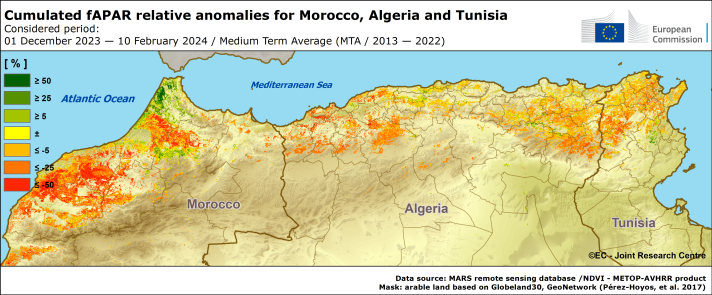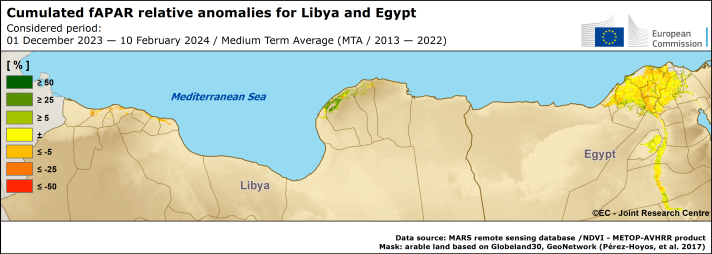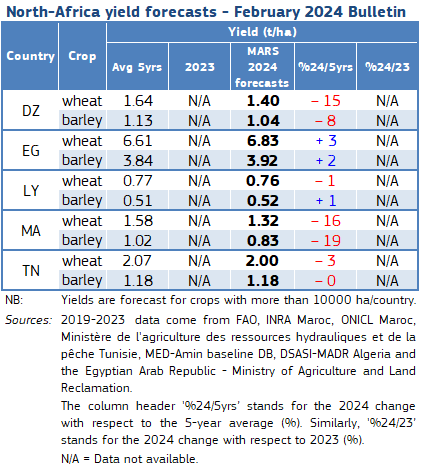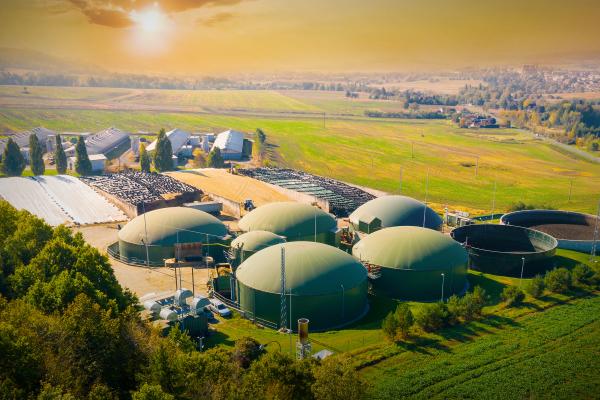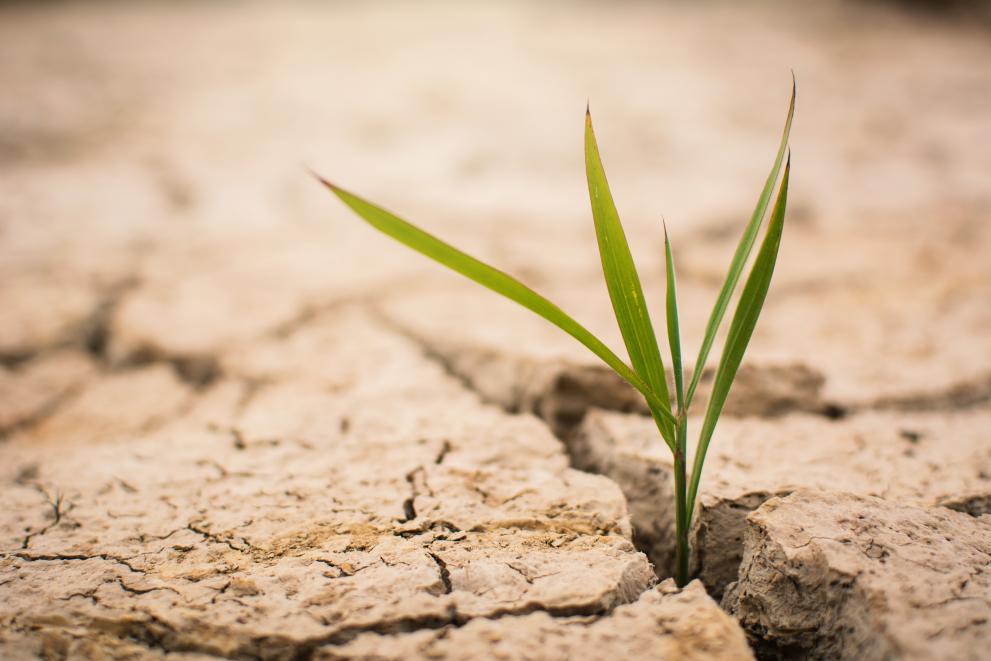
In particular, well-below-average crop biomass accumulation was observed in most of the main cereal-growing regions of Morocco and the north-western and central regions of Algeria, and a marked delay in winter crop sowing was recorded in Algeria, Tunisia and western Libya.
Rainfall events in December and January triggered a steep recovery during the vegetative phase in eastern Algeria and Tunisia while in Libya, at the country level, the positive yield expectations in Cyrenaica are expected to compensate for the below-average expectations in Tripolitania. Finally, favourable growing conditions have prevailed in the main cereal-producing regions of Egypt.
Highlights
- Morocco (MA). There was well-below-average crop growth in most of the main cereal-producing regions, with minimal possibility of crops fully recovering. Cereals are in the advanced vegetative stages.
- Algeria (DZ). Persistent dry conditions delayed sowing. Damage to crops seems to be irreversible in many western continental regions, while a rapid recovery of growth is observed in eastern central continental regions.
- Tunisia (TN). The drought in autumn caused a delay to sowing of 20–30 days. After a rapid recovery, biomass accumulation levels are in line with or slightly below the average. Crops are in the late vegetative development stages.
- Libya (LY). Libya faced average to positive growing conditions, despite sowing delays in the north-western coastal regions. Cereals are generally approaching the flowering stage.
- Egypt (EG). In the current flowering period, biomass accumulation is above average in all the main cereal-producing regions thanks to favourable weather conditions and predominantly irrigated arable land.
Observed canopy conditions
NDVI relative anomaly maps: the maps display differences between the Fraction of Absorbed Photosynthetically Active Radiation (fAPAR) computed from remote sensing imagery between 11 February to 10 May 2023, and the medium-term average (2013-2022) fAPAR for the same period. Positive anomalies (in green) reflect above-average canopy density, while negative anomalies (in red) reflect below-average canopy density.
Yield forecasts
Our yield forecasts for cereals in Morocco and Algeria are 15–19% below the 5-year average, while the forecasts for Tunisia, Libya and Egypt are close (from – 3 % to +3 %) to the 5-year average.
Further information
JRC MARS (Monitoring Agricultural Resources) Bulletins
The latest information about global agricultural production hotspots for countries at risk of food insecurity is available on the JRC’s ASAP (Anomaly hot Spots of Agricultural Production).
Details
- Publication date
- 26 February 2024
- Author
- Joint Research Centre
- JRC portfolios

